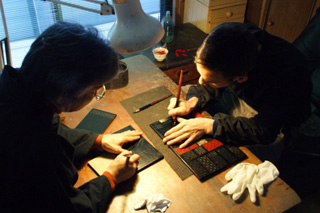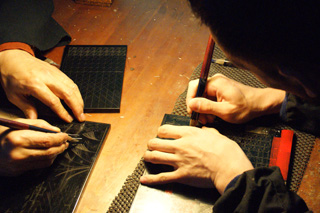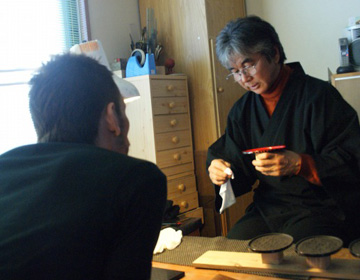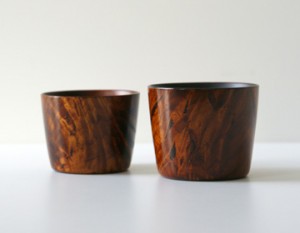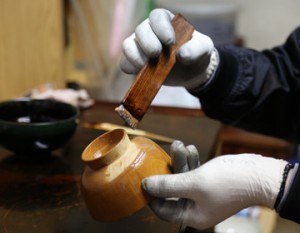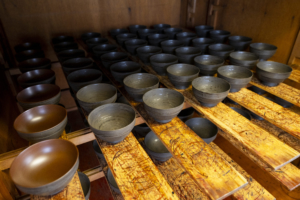Combination of Japanese Asian techniques
Yorishige Matsudaira, the grandson of Ieyasu Tokugawa, greatly contributed to the production of lacquer ware in Kagawa. Yorishige Matsudaira was the first feudal lord of the Sanuki Takamatsu clan. He moved to Takamatsu from Mito, receiving some land from Tokugawa in 1638. The artistic feudal lord had extensive knowledge of lacquerware and sculptures, and enjoyed the art of tea ceremony and flower arrangement. He is said to have promoted lacquerware production and helped nurture artisans.
With support from the feudal lord, the lacquerware industry blossomed, and skilled artisans and great masters appeared in large numbers.
Zokoku Tamakaji was called the father of lacquerware late in the Edo Period. The artist explored lacquerware techniques such as ”kinma”, ”zonsei” and ”choshitsu” and combined them with classic Japanese techniques to creative his own original techniques, which became the foundation of ”Kagawa shikki”.”
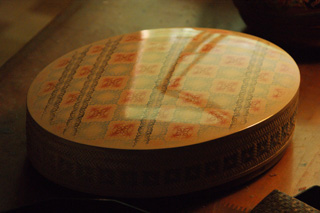
Technique of creating Kagawa shikki
”Kinma” involves repeatedly applying lacquer, carving patterns with a carving knife called ”ken”, filling the carved parts with colored lacquer, and polishing. This process is carried out for each color of lacquer including red and yellow. The whole process involves about 60 steps in total.
”Zonsei” is a technique where a pattern is drawn using colored lacquer on a lacquered base, carving the outline with the ”ken”, and using fine knives to carve the delicate lines.
”Choshitsu” involves repeated application of lacquer and carving of the surface with the ”ken” to create patterns. The characteristic of ”Kagawa shikki” is that the lacquer is applied repeatedly, creating many layers. For instance, dozens of layers of red lacquer and green lacquer are applied, and the layers are carved to expose the underlying color. The depth of the carving creates different tones of red and green. The layer of lacquer is only a few millimeters, so delicacy and precision is required. The result is a 3-dimensional artwork of beautiful colors.
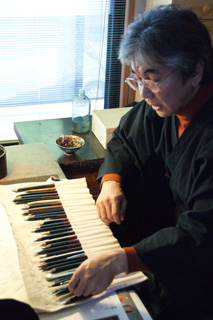
Bold conception and delicate work
The biggest characteristic of ”Kagawa shikki” is the highly artistic methods that exceed folk craft. Nakata visited the workshop of Hayato Otani.
Otani, a lacquer ware artisan, is especially skilled at applying lacquer onto ”rantai” made from woven bamboo strips using the ”kinma” method.
His skills have received wide acclaim, and he has won prizes and awards including the Takamatsunomiya Memorial Award in 1998 and Medal with Purple Ribbon in 2009. Hitoshi Ota, a Living National Treasure and ”Kagawa shikki” artisan, predicted that Otani would be one of the prominent figures in ”Kagawa shikki”.
The exquisite patterns
To avoid creating a very craft-like, primitive bamboo basket, he makes a mold using wood, and weaves bamboo strips using the mold, then removes the mold.
At the workshop, Nakata tried carving with the ”ken”. Only delicate and careful work can create the exquisite patterns.
Seventeen lacquerware artists have been designated as Living National Treasures in Japan. Four of them are from Kagawa.
This is proof that lacquerware art has taken root and developed successfully in Kagawa since the time of Yorishige Matsudaira.
